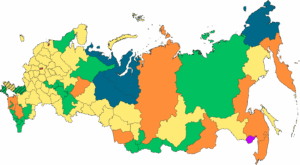WASHINGTON D.C. — The United States government is being urged to insist both Japan and South Korea use the $900 billion they promised to invest towards a federally-led industrial program—dubbed the “Electronics Sovereignty Act”—to end the nation’s dangerous reliance on foreign supply chains for small electronics. Proponents argue that the country’s national security is critically compromised by its inability to mass-produce complex micro-electronics like those found in iPhones and tactical drones.
The bold proposal calls for a $120 billion investment out of the $900 billion funding from Japan and South Korea to create a massive, integrated manufacturing ecosystem spanning the U.S.-Mexico border near El Paso, Texas, a move deemed necessary to match the sheer industrial scale of geopolitical rivals.
The Existential Threat: Scale of Production
While Congress passed the CHIPS Act for semiconductor fabrication, security experts warn that the focus must expand immediately to final assembly and component manufacturing.
The strategic problem is one of scale: China’s capacity to produce over a billion consumer phones annually means it possesses a near-instantaneous wartime capacity to convert those production lines into churning out millions of tactical drones and missiles. The current U.S. structure, conversely, is capable of only a fraction of this output.
“This is a national security situation at this point and the USA needs to adapt to resolve it,” the plan asserts. “If the USA was in a major war it would lose because it does not have the current structure to mass produce millions of small electronic.”
The “Electronics Sovereignty Act” would specifically target the manufacturing of everything that goes into an iPhone, a drone, and a missile—securing the entire small-electronics value chain on American-controlled soil.
A Revolutionary Economic Model for Mass Production
The primary barrier to U.S. electronics manufacturing is cost, with experts projecting a US-made iPhone could cost $2,000 to $3,500. This proposal offers a government-backed solution to bypass high labor costs while ensuring humane conditions and a stable workforce.
The El Paso Mega-Complex
The plan dictates the creation of 100 “Free Trade Micro-Electronic Manufacturing Zones” stretching 70 miles around El Paso, Texas, strategically positioned inland and decentralized for defense purposes. This network would require over 5 million workers and 100 million square feet of factory floor space.
A Hybrid Labor Solution
Recognizing that no American company can find millions of workers willing to work for low wages, the proposal outlines a unique, bi-national labor compact:
- Fixed Low Operating Cost: The law would lock in the minimum wage of $7.50 per hour for the duration of the 50 year program, providing long-term predictability essential for corporate investment.
- Total Worker Security: To make the wage appealing, the investors/backed by the government would build housing, and offer three meals per day, medical care, uniforms/clothing as well as entertainment amenities and adult education/college programs. The housing, primarily built in Mexico just across the border (reducing construction costs), would be connected to the U.S. facilities via dedicated, secure worker crossings.
- Worker Expenses would result in about $3,600 for housing and $4,200 for meals would be the total expenses for the workers to pay and would pay a return on investment for the housing investors. This would result in a total yearly living expense of $7,800 dollars.
- Life-Changing Remittance: Workers, recruited under specialized visas from countries like Pakistan and Bangladesh, would pay nominal fees for their housing and meals, leaving an estimated $6,600 in clear take-home pay—a significant financial gain compared to their home countries’ average incomes which in many cases is less than $1,000 for the entire year, with no savings potential.
- The workers would be exempt from payroll taxes and would not qualify to receive social security later in life, thus enhancing this $6,600 life saving value.
This model allows the US to achieve scale and cost-competitiveness while offering foreign workers a highly attractive, safe, and stable opportunity.
A Self-Financing National Priority
The upfront cost of the massive infrastructure build-out is estimated at $120 billion, with half structured as a loan.
- $60 Billion for the construction of 5 million private, dormitory-style rooms in Mexico, built quickly and cost-effectively.
- $10 Billion for the shell structures of the 100 million square feet of factory space.
- $50 Billion for internal factory equipment, including specialized robotics and advanced equipment.
Crucially, the plan is designed to be financially sustainable. The projected rental payments from the five million workers are expected to pay off the $60 billion housing portion of the loan in less than seven years, establishing a long-term, self-funding industrial base that pays for itself while securing the nation’s technological future.
The government, officials say, must now implement this politically challenging but strategically essential law to restore America’s mass manufacturing capability.
Products
Obviously, Phones, however the main thing is that products already made in Mexico and in the USA would not qualify to be made in these economic Zones.
Japan and South Korea are seeking to invest $900 billion in the United States; however, identifying suitable opportunities for allocating such a significant sum remains a challenge. This approach is for South Korea and Japan to manufacture goods within the USA that are currently not produced in North America and are of need to be produced in the USA.



